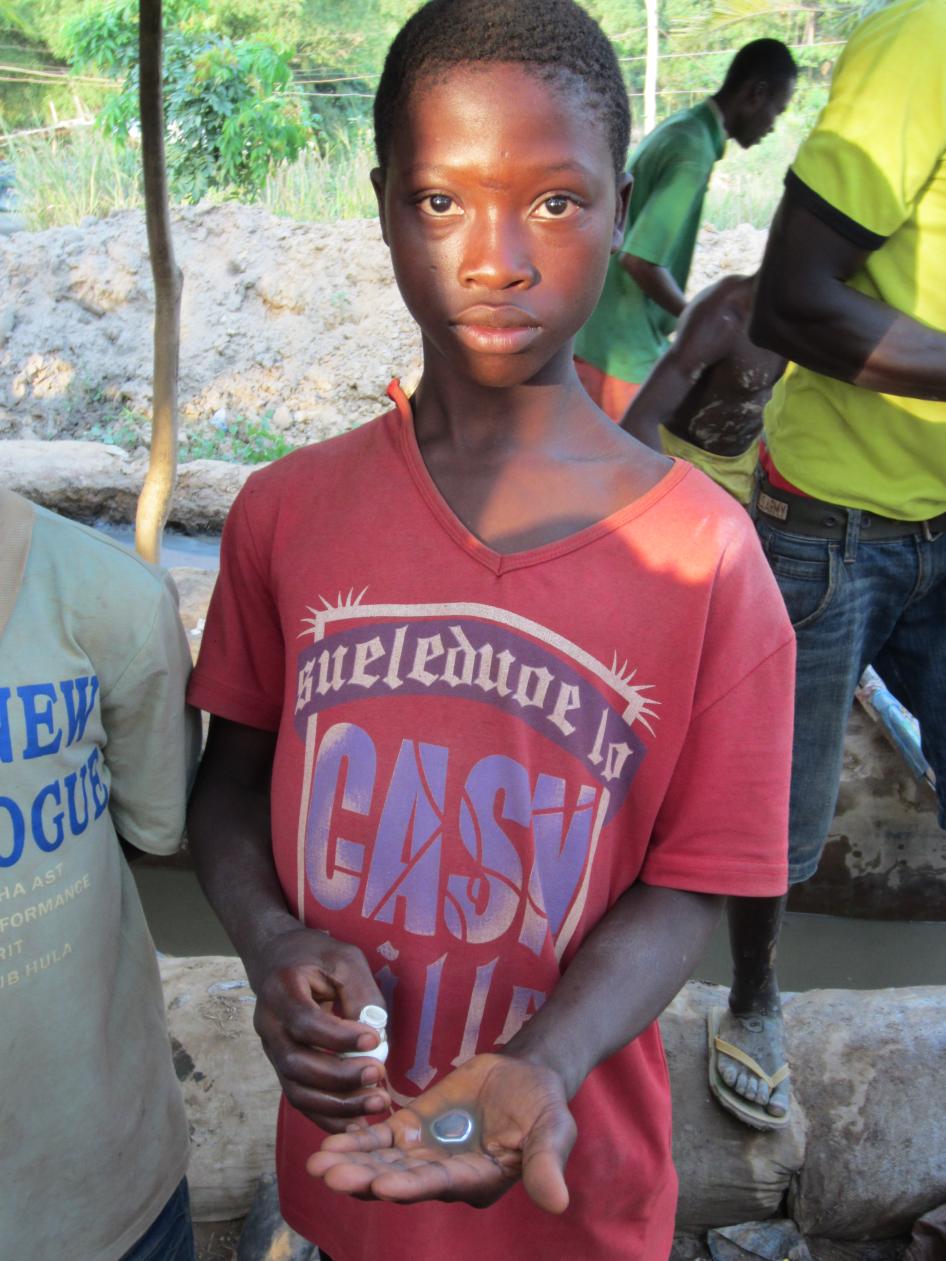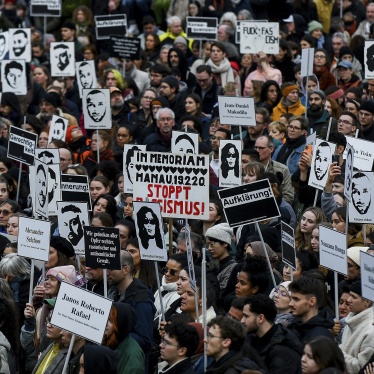One of the world’s biggest and most prestigious jewelry and watch fairs is currently taking place in Basel. Luxury brands will display their latest watch collections and jewelry creations for visitors from around the world. I can almost hear the champagne glasses clinking. Last year, the show had 150,000 visitors.
Baselworld is far away from the small-scale mines in many countries where one million children are estimated to work globally—but they are connected.
Take the case of gold watches and jewelry. At least 12 percent of the global gold supply comes from artisanal and small-scale gold mines—mines that are run with little or no machinery and rely on an unskilled labor force of adults and children. While artisanal and small-scale mining offers important income opportunities for rural populations, it often encourages hazardous child labor and causes serious environmental damage.
My colleagues and I have interviewed children as young as 9 toiling in these mines in Mali, Ghana, Tanzania, and the Philippines. These children crush rocks, carry extremely heavy loads, and process gold with mercury—a highly toxic substance that causes brain damage, other neurological conditions, or even death. Adolescent boys also work in deep, unstable pits, and have been injured or killed in mine accidents.
In a Ghanaian village, I met a 12-year-old bright, smiling boy—let's call him Samuel. His job was to crush gold-rich ore, shovel it onto a board, and process raw gold with mercury. Unaware of the health risks connected to mercury poisoning, he explained to me how he spreads the liquid metal with his bare hands and then burns the mercury-gold amalgam over a fire—a process that releases toxic fumes. "I am very tired from it,” he told me. “Sometimes I buy painkillers to soothe the pain in my back and chest... I sell the gold to a buyer, at his house. He does not ask about my age. The trader also gives me mercury."
The gold supply chain begins at local mines and involves local traders, exporters, and international refiners, before the gold is crafted into the watches and jewelry on display in Basel this week. In Ghana, we found that local traders buy at informal sites, where children often work, and do not scrutinize the conditions the gold they buy has been mined in. This lack of care is common throughout the gold supply chain.
For example, Metalor, an international refiner, sources from a (Ghana government-owned) company which acknowledges that it has “no way of knowing” whether the gold it sells on to refiners has been produced with child labor.
The situation is not unique to Ghana. Globally, much of the gold from artisanal mining is bought by local traders, then sold on through a chain of larger companies until it reaches the world’s leading gold refineries in Switzerland, Dubai, or elsewhere. Refiners sell the refined gold to banks, jewelers, and other retailers.
Jewelry and watch brands have a responsibility to ensure that the precious metals and gems they are selling has not been mined or processed by children, and that their business activity does not otherwise contribute to rights abuse. To do that, they need to have safeguards in place often called human rights due diligence measures. Simply put, this means that companies should make sure that they are aware of any human rights problems in their supply chains and take effective steps to address them.
The first step is to know the source. Buyers should be able to trace precious metals and gems all the way back to the mines of origin.
Jewelry and watch brands should also include human rights expectations in contracts with their suppliers. In particular, they should make sure that monitors with expertise in human rights and child labor rigorously check conditions in small scale mines. There should also be audits or other third-party inspections by truly independent entities, with the results made public.
These are not far-fetched ideas. The problem is that many companies have not yet been pushed to carry out these practices. In fact, these measures are spelled out in international standards that businesses have widely embraced, notably the United Nations Guiding Principles on Business and Human Rights, and in specific guidelines on the gold trade by the international Organisation for Economic Co-operation and Development (OECD).
Surely the visitors at Baselworld don’t want to support child labor. So they should ask whether jewelers have the safeguards in place to ensure that they don’t do so inadvertently. As they admire the beautiful goods on display, Baselworld visitors should ask exhibitors how they ensure that no gold mined or processed by children enters their supply chain. Manufacturers have the responsibility to know where the gold used in their manufacturing has come from, and to ensure that children like Samuel are spared from the harmful effects of gold mining.








